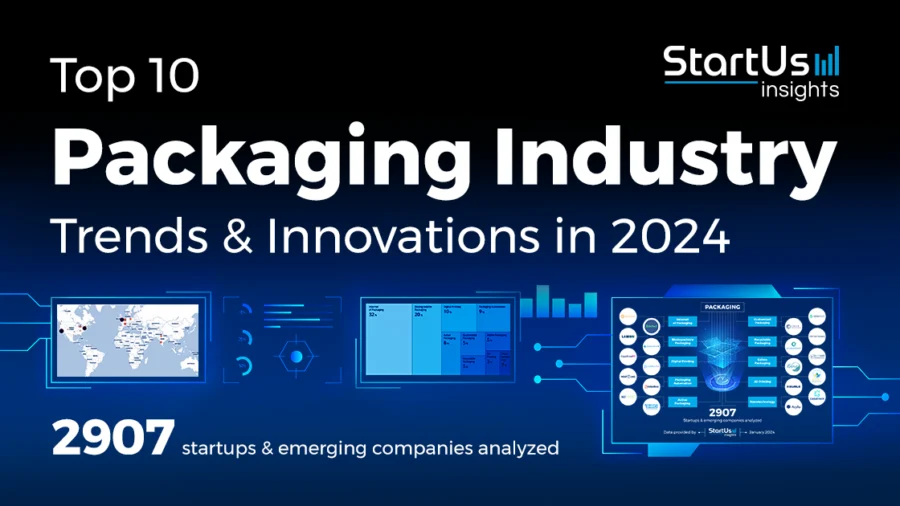Introduction to Technology Packages
Technology packages have become a cornerstone in both modern business operations and everyday life. Essentially, a technology package is a bundled set of technological tools and services designed to provide comprehensive solutions to specific needs or challenges. These packages typically include software applications, hardware components, and sometimes accompanying service agreements, all aimed at enhancing productivity, efficiency, and user experience.
The importance of these packages cannot be overstated. In the business world, they can streamline processes, improve communication, facilitate data management, and offer robust security features. For individual users, technology packages often provide convenience and seamless integration across different devices and platforms. As organizations and individuals increasingly rely on digital solutions, the demand for well-packaged technology solutions continues to grow.
There are various types of technology packages available, tailored to meet diverse requirements. For businesses, options range from enterprise resource planning (ERP) systems and customer relationship management (CRM) platforms to specialized industry-specific software solutions. On the consumer side, packages might include smart home kits, gaming bundles, or comprehensive security suites that offer multiple tools to protect digital assets.
The growing reliance on technology packages is evident across multiple sectors. In healthcare, these packages enable better patient care through integrated electronic health records (EHR) systems and telemedicine solutions. In education, they facilitate remote learning and collaborative tools that bring students and teachers closer, despite physical distances. Even in the finance sector, packages that offer advanced analytics and compliance tools help institutions navigate the ever-evolving regulatory landscape.
As we delve further into this comprehensive guide, it becomes clear that technology packages are not just a collection of tools but a strategic asset that can propel business and personal productivity. By understanding and leveraging these packages, users can unlock new potentials, making technology an invaluable ally in navigating today’s digital world.
Types of Technology Packages

Technology packages come in various forms, each tailored to meet specific industry needs and solve certain challenges. These can range from comprehensive software suites to intricate hardware bundles and fully integrated solutions. Understanding the distinct characteristics of each category can help businesses and individuals choose the most appropriate technology package for their requirements.
Software packages typically consist of collections of related software programs bundled together to offer a unified solution. Examples include Microsoft Office, which provides tools for word processing, spreadsheets, and presentations, or Adobe Creative Cloud, a suite covering graphic design, video editing, and web development. These packages are indispensable across multiple industries, including education, media, architecture, and corporate environments, due to their ability to streamline operations and enhance productivity.
On the other hand, hardware bundles generally combine multiple hardware components into a single, more affordable package. These can include computer systems with pre-installed peripherals, server racks with networking equipment, or home entertainment systems that integrate sound, video, and connectivity options. Notable examples are the Dell XPS family of computers, which includes towers, monitors, and keyboards, or high-end gaming bundles such as those offered by Alienware. Such packages are particularly beneficial in settings where seamless compatibility and immediate functionality are crucial, such as in offices, data centers, and home media setups.
Integrated solutions represent another important category of technology packages. These encompass a combination of both hardware and software designed to work harmoniously from the get-go. Examples include Apple’s ecosystem, which integrates devices like the iPhone, iPad, and MacBook with services such as iCloud and iMessages, or enterprise solutions like SAP, where software applications are tailored for specific business processes and hardware infrastructure. These packages are widely adopted in industries requiring robust, end-to-end solutions, including healthcare, finance, and large-scale manufacturing to ensure minimal integration woes and maximum efficiency.
Each type of technology package has a specific role, tailored to its targeted industry and problem set. Recognizing the ideal package type can lead to better resource allocation, higher productivity, and overall enhanced technological synergy within any organization.
Benefits of Technology Packages

Leveraging technology packages brings a multitude of advantages to businesses of all sizes and industries. One of the most significant benefits is cost savings. By using pre-configured solutions, businesses can avoid the substantial expenses associated with developing custom tools. This reduction in cost is not limited to the initial implementation; ongoing maintenance and updates are often streamlined and more affordable as well.
Technology packages also offer ease of implementation. Pre-configured solutions are designed to integrate seamlessly with existing systems, reducing the time and effort required to deploy new technologies. This simplicity allows organizations to focus more on their core activities while still achieving technological advancement. Moreover, these packages are typically supported by comprehensive documentation and customer support, further minimizing installation and configuration challenges.
Scalability is another key advantage. Technology packages can adapt to growing business needs without requiring extensive re-engineering. Whether a business is experiencing rapid growth or planning for future expansion, a scalable technology package can accommodate these changes efficiently. This adaptability not only meets current operational demands but also aligns with long-term strategic planning.
Enhanced performance is inherent to well-designed technology packages. These solutions are developed with best practices in mind, ensuring that they operate at peak efficiency. This optimization leads to better resource management and improved results. By leveraging technology packages, businesses can ensure reliability and performance, crucial factors for maintaining competitive advantage.
Beyond operational efficiency, technology packages have the potential to drive innovation. By utilizing cutting-edge technology provided in these packages, businesses can experiment with new ideas and rapidly implement innovative solutions. This capability empowers organizations to stay ahead in their respective markets, continually evolving and improving their offerings.
Moreover, technology packages play a crucial role in supporting business goals. They provide tailored solutions that align with organizational objectives, facilitating smoother achievement of targets. Their pre-configured nature requires minimal customization, allowing businesses to realize benefits swiftly. This alignment ensures that technology acts as an enabler, directly contributing to strategic initiatives and overall success.
Choosing the Right Technology Package
Selecting an appropriate technology package entails a rigorous evaluation of several critical factors to ensure that it aligns with both current needs and future ambitions. Primarily, budget constraints play a pivotal role in determining the feasible options. Enterprises should conduct a thorough cost-benefit analysis, considering the total cost of ownership that spans initial purchase, implementation, maintenance, and any potential upgrade costs. This thorough financial scrutiny helps in establishing a realistic budget and identifying packages that deliver maximum value within those limits.
Compatibility is another vital aspect to consider. A technology package needs to seamlessly integrate with existing infrastructure, software, and workflows. Moreover, businesses must evaluate the package’s compatibility with industry standards and compliance requirements. An incompatible system can lead to operational disruptions, increased costs, and missed opportunities to optimize existing processes.
Scalability is equally crucial in the decision-making process. A scalable technology package can grow in tandem with the business, accommodating increased workloads, additional users, and extended functionalities without necessitating a complete overhaul. Enterprises should prioritize packages that offer adaptable solutions capable of evolving with technological advancements and market demands.
Support options are indispensable for sustaining the effective operation of the technology package. Reliable vendor support ensures timely resolution of technical issues, continuous updates, and essential training for user proficiency. Evaluating a vendor’s reputation, responsiveness, and range of support services—such as 24/7 help desks, dedicated account managers, and comprehensive documentation—can significantly impact the user experience and overall utility of the technology package.
Evaluating vendors necessitates a judicious approach. Potential vendors should be appraised on their track record, client testimonials, and market standing. It is advisable to solicit expert opinions, engage in demonstrations, and request trial periods to assess the operational aspects of the packages firsthand. Comparing various packages involves scrutinizing features, scalability, and cost-effectiveness to pinpoint the most fitting solution.
Involving key stakeholders such as IT personnel, department heads, and end-users in the selection process fosters a holistic perspective. Their input helps in identifying specific requirements, potential challenges, and strategic advantages, ensuring a well-rounded and effective decision. By integrating diverse insights and expertise, organizations can select a technology package that not only meets technical specifications but also enhances overall business productivity and growth.
Implementation Strategies for Technology Packages
Effective implementation of technology packages is crucial for organizations aiming to leverage modern tools to enhance productivity and streamline operations. A well-defined plan is the cornerstone of a successful rollout. Begin with a comprehensive assessment of current systems to identify gaps and customize the technology package to meet specific needs. This involves collaborating with stakeholders to ensure all requirements are met and expectations are aligned.
Training users is another critical element in the seamless integration of a technology package. Thorough training programs must be developed to equip employees with the necessary skills and knowledge. This could be achieved through a combination of workshops, online tutorials, and hands-on sessions that cater to different learning styles. Regular follow-up sessions can help address any emerging issues and reinforce learning.
Managing change effectively is indispensable when integrating new technology. Resistance to change is a common challenge that can be mitigated by fostering a culture of openness and communication. Engage employees early in the process to gain their buy-in and mitigate resistance. Establish a feedback mechanism to capture concerns and suggestions, allowing for timely adjustments to the implementation plan.
Ensuring a smooth transition involves careful monitoring and support. Provide technical support to address any hiccups promptly and maintain an open line of communication with users. Documentation and resources should be readily accessible to aid users in troubleshooting minor issues independently.
Common pitfalls in implementing technology packages include underestimating the complexity of integration, insufficient training, and lack of ongoing support. Address these challenges by investing in a robust project management framework, scheduling adequate training sessions, and setting up an efficient support system.
By taking a strategic approach that covers planning, training, change management, and support, organizations can navigate the complexities of implementing technology packages effectively. This method will not only streamline the process but also ensure that the benefits of the technology package are fully realized, driving overall organizational success.
Case Studies: Successful Technology Package Implementations
Several organizations have reaped significant benefits by adopting and integrating tailored technology packages into their workflows. By examining these case studies, we can better understand the specific challenges encountered, the selected solutions, the implementation procedures, and the outcomes achieved. These instances demonstrate the practical advantages and potential return on investment (ROI) that can be realized through effective use of technology packages.
One prominent example is a mid-sized retail chain that faced inefficiencies in inventory management and customer service. They turned to a technology package specifically designed for retail operations. This package included an advanced inventory tracking system, a robust point-of-sale (POS) solution, and customer relationship management (CRM) software. The implementation process involved extensive staff training and phased rollout over six months. The result was a 20% reduction in stockouts, a 15% increase in sales, and improved customer satisfaction due to quicker and more accurate service.
In the healthcare sector, a regional hospital sought to upgrade its patient management and electronic health records (EHR) system. They opted for a technology package that integrated patient scheduling, EHR, and billing systems. The major challenge was ensuring data security and compliance with regulatory standards. The implementation took approximately nine months, involving comprehensive data migration and staff onboarding. As a result, the hospital saw a 25% improvement in patient appointment adherence, faster claim processing, and a notable reduction in administrative workload, ultimately enhancing patient care quality.
A financial services firm implemented a technology package focused on automating back-office operations and enhancing cybersecurity. This included software for data encryption, transaction monitoring, and automated reporting. The challenges were primarily around data integration and maintaining business continuity during the transition. With meticulous planning and execution over four months, the firm achieved seamless integration. Post-implementation, they experienced a substantial decrease in manual processing errors, heightened data security, and a 30% reduction in operational costs.
These case studies underscore the value of selecting the right technology package tailored to specific industry needs, followed by a meticulously planned and executed implementation process. The resultant improvements in efficiency, customer satisfaction, and financial performance highlight the transformative potential of technology packages across various sectors.
Future Trends in Technology Packages
As we edge further into the digital age, technology packages are evolving rapidly, driven by advancements in artificial intelligence (AI) and machine learning (ML). These innovations are augmenting the capabilities of existing systems, making technology packages more adaptive and intelligent. For instance, AI-infused technology packages are now capable of predictive analytics, allowing businesses to forecast trends and make data-driven decisions with unprecedented accuracy.
Another significant trend is the shift towards cloud-based solutions. Cloud technology is revolutionizing the landscape by offering scalable and flexible options for storing and processing data. Companies can now deploy comprehensive technology packages without the need for massive infrastructure investments. This transition to the cloud not only ensures real-time data accessibility but also facilitates seamless integration with other digital tools, enhancing overall efficiency.
Cybersecurity has also become a paramount concern as digital threats continue to evolve in complexity. Emerging technology packages are increasingly incorporating robust cybersecurity measures to protect sensitive information. These packages are designed with advanced encryption techniques, multi-factor authentication, and continuous monitoring to safeguard against potential breaches. Businesses and consumers alike are prioritizing security, making it a critical component of future technology packages.
The trajectory of technology packages is also shaped by the growing demand for personalized solutions. As consumers and businesses seek bespoke experiences, technology packages are being tailored to meet specific needs. This trend towards customization is facilitated by AI and ML, which analyze user behavior to deliver personalized content and services.
Looking forward, the evolution of technology packages will be marked by continuous innovation. We can anticipate more interconnected systems, leveraging the Internet of Things (IoT) to create a cohesive digital ecosystem. These advancements will not only enhance the user experience but also drive business efficiency and growth in unprecedented ways. As these trends unfold, technology packages will remain at the forefront of digital transformation, continually adapting to the dynamic needs of the modern world.
Conclusion and Next Steps
In this comprehensive guide, we’ve explored the various facets of technology packages, including their definitions, benefits, and practical applications across multiple sectors. A technology package, also known as a tech stack, integrates various tools and software components aimed at enhancing operational efficiency, automating processes, and driving innovation. Given their importance, understanding these packages is crucial for any business or individual seeking to remain competitive in a digitized world.
As a first step toward leveraging technology packages, consider conducting an internal audit to identify current technological needs and potential areas for improvement. This audit will help in pinpointing gaps that a tailored technology package could fill. Engage with stakeholders across different departments to gather insights on their unique technological requirements.
It’s also advisable to start with pilot projects. Implement a small-scale version of your selected technology package to test its efficacy and resolve any issues before a full-scale rollout. This approach helps manage risks while maximizing opportunities for learning and adaptation.
For those looking to delve deeper, numerous resources are available. Online courses, webinars, and tech forums are valuable platforms for expanding your understanding. Additionally, staying current on industry trends is essential. Follow tech blogs, subscribe to relevant newsletters, and join professional networks to keep abreast of the latest advancements in technology packages.
Moreover, seek out case studies and testimonials from similar organizations that have successfully implemented technology packages. Their real-world experiences can offer valuable insights and potentially introduce you to best practices and innovative solutions.
By systematically exploring, implementing, and continuously updating your technology package, you’ll harness its full potential, driving both efficiency and growth. Keep in mind that technology is ever-evolving; therefore, remain adaptable and open to new developments that could further enhance your operations. With a thoughtful approach, the integration of a comprehensive technology package can significantly transform your business landscape.


